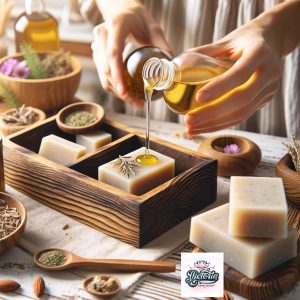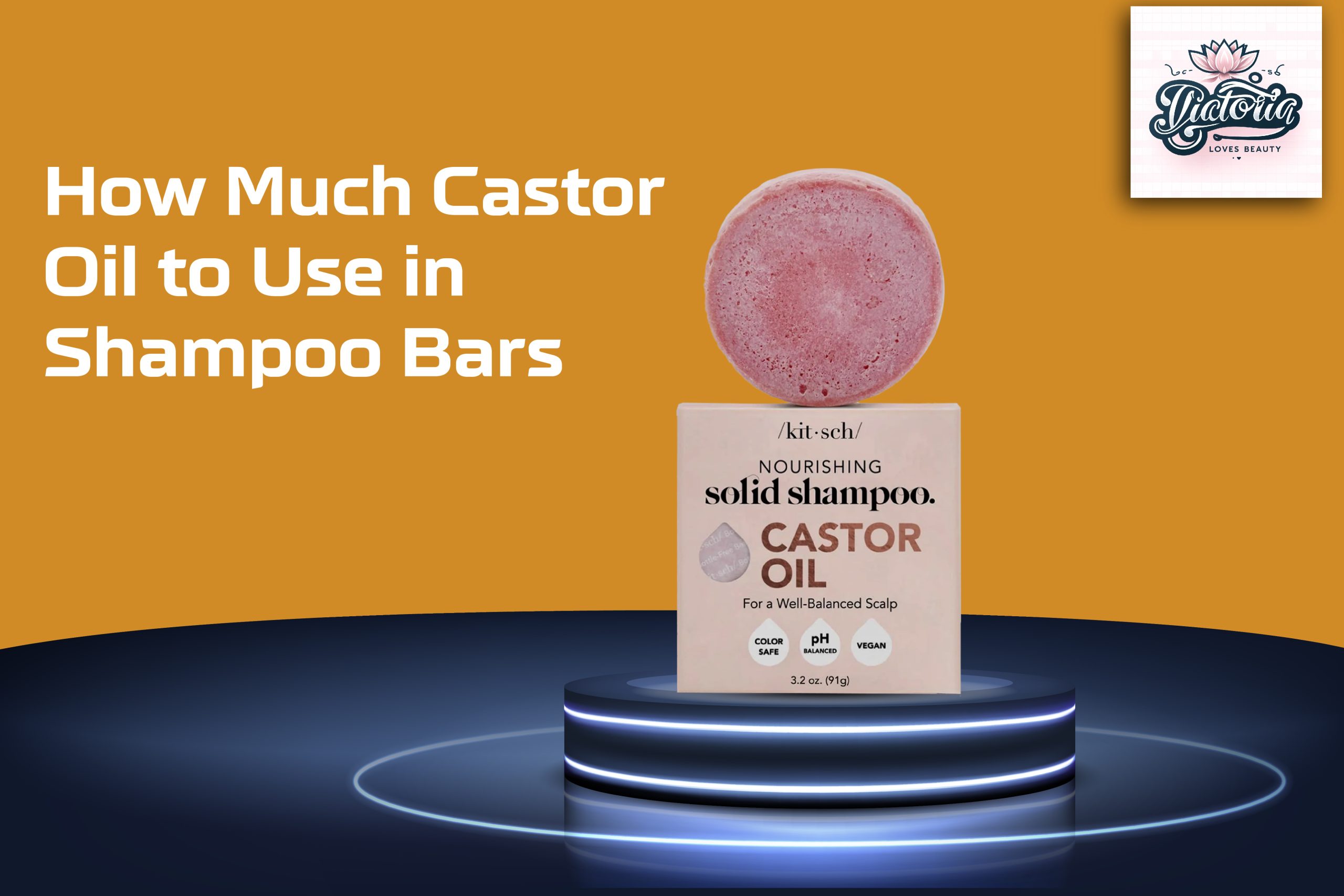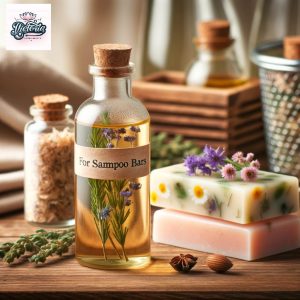Castor oil may be a game-changer when it comes to getting healthier, more luscious hair, especially when it comes to DIY shampoo bars. It would help if you got the ideal castor oil proportion in your composition for the best effects. To assist you in getting the perfect ratio for your hair care requirements, this article examines the science and art of precisely measuring the castor oil used in shampoo bars. We’ll help you determine the ideal castor oil ratio for your personalized shampoo bars, whether your goals are more hydration, better lather, or faster hair development.
Understanding Castor Oil: Its Properties and Benefits
Castor oil is a versatile natural oil that offers many benefits for hair care. It nourishes the hair with essential nutrients, promotes hair growth, maintains scalp health, and provides deep moisturization. Here are some of its properties and benefits:
- Rich in Nutrients: Castor oil is a naturally occurring oil that is made from the seeds of the Ricinus communis castor plant. It is well known for having a high concentration of vital elements, including vitamins, minerals, and fatty acids. The general well-being and sustenance of hair follicles depend on these substances.
- Encourages Hair Growth: One of castor oil’s most notable advantages is its capacity to encourage growth. Certain fatty acids present in castor oil, such as ricinoleic acid, have been shown to stimulate hair follicles. This stimulation is a popular option for those who want longer, thicker hair since it can promote hair growth and decrease hair loss.
- Scalp Health: Castor oil has inherent antibacterial and antifungal qualities. When used topically, it can help keep the scalp’s environment healthy by battling bacterial and fungal problems that might cause da
dandruff or irritate the scalp. Sturdy scalps are necessary for good hair development. - Effect on Moisturization: Castor oil is an excellent moisturizer for the scalp and hair. Deeply into the hair shaft, it keeps moisture locked in and guards against dryness. The result of this deep conditioning process gives the hair a natural shine and makes it softer and smoother.
Optimal Castor Oil Amount in Shampoo Bars
Percentage in the formula
It’s essential to consider the percentage of castor oil in the recipe while making shampoo
o bars containing it. Generally speaking, 5–10% of the total oils in the shampoo bar mix should be castor oil. This range offers an excellent place to start when balancing castor oil’s advantages and those of the other oils in the mixture.
Hair Type Consideration
Consider the unique requirements of various hair types to further fine-tune the amount of castor oil in your shampoo bars. A bit more castor oil might be helpful for people whose hair is dry and damaged. The profoundly moisturizing qualities of castor oil can aid in hydrating and replenishing parched hair, encouraging smoother, more manageable hair.
On the other hand, those with oily hair may benefit from a reduced castor oil proportion. Although castor oil suits different hair types, too much usage on oily hair can make it feel too greasy or heavy. Finding the idea
l balance between moisture and oil management can be facilitated by modifying the castor oil content according to the kind of hair.
Trial and error
Creating the ideal shampoo bar recipe frequently requires trial and error. To begin with, consider reducing the castor oil in your mixture and pay close attention to how your hair reacts. Examine wetness, lather, and your hair’s general feel following a wash. If you discover that your hair might benefit from more moisture, progressively raise the proportion of castor oil.
Mixing Castor Oil in Shampoo
Bar Recipes
Because shampoo bars are made of natural chemicals and are eco-friendly, they have become quite popular. It’s crucial to comprehend how to blend castor oil properly if you’re considering including it in your shampoo bar recipe to improve its nourishing qualities. The quality and functionality of your shampoo bar may be significantly improved by properly including castor oil in the formulation.
The following are essential pointers for adding castor oil to shampoo bar recipes:
- Melting and Blending: The melting stage is one of the most important when making shampoo bars. All the components are mixed and cooked to a specific temperature during this step to create a homogenous mixture. This is the time to add the castor oil to the mixture. Because castor oil has a relatively high melting point, it must ensure the mixture incorporates the oil completely. To start, slowly heat your recipe’s remaining oils and ingredients until they melt and combine. Add the castor oil and stir until the mixture reaches the desired temperature. By doing this, the castor oil will mix in with the other oils more efficiently, and the shampoo bar will have a uniform structure and composition.
- Even Distribution: To guarantee constant quality and efficacy, you must ensure that castor oil is distributed equally throughout the combination of your shampoo bar. Variations in the finished product might impact its benefits and performance due to uneven distribution.
The Role of Castor Oil in Lathering and Cleansing
Castor oil enhances lathering and cleansing properties when creating effective shampoo bars. This natural oil, derived from the castor bean plant (Ricinus communis), offers unique characteristics that contribute to a luxurious and practical hair cleansing experience.
Here’s a closer look at the role of castor oil in lathering and cleansing:
Enhanced Lather:
Castor oil is renowned for boosting the lathering capability of shampoo bars. Lather adds a tactile element to the washing process and is vital in thoroughly cleansing the hair and scalp. When castor oil is included in shampoo bar formulations, it helps create a rich, creamy lather that envelops the hair strands and scalp. This abundant lather ensures that the cleansing agents in the shampoo bar are evenly distributed, effectively lifting away dirt, oils, and impurities from the hair and scalp.
Gentle Cleansing:
Despite its powerful cleansing properties, castor oil stands out for its gentle and nourishing approach. While some strong cleansers can strip the hair of its natural oils, leaving it dry and brittle, castor oil works differently. It can remarkably cleanse the hair and scalp deeply while maintaining the hair’s natural moisture balance. Removing excess oils and buildup leaves the hair feeling clean, refreshed, and manageable without causing excessive dryness or damage.
The combination of enhanced lathering and gentle cleansing makes castor oil an excellent choice for those who formulate or use shampoo bars. It not only ensures a satisfying and practical washing experience but also helps maintain the health and vitality of the hair. Whether you have dry, damaged, or oily hair, adding castor oil to shampoo bars contributes to a luxurious and nurturing cleansing routine, leaving your hair clean, vibrant, and well-nourished.
Customizing Shampoo Bars with Castor Oil:-

For Different Hair Types:
One of the key advantages of using castor oil in shampoo bars is its versatility, allowing you to tailor your formulation to meet the specific needs of your hair type. Here’s how to customize for different hair types:
- Dry Hair: If you have dry and brittle hair, you can increase the percentage of castor oil in your shampoo bar recipe. Castor oil’s deep moisturizing properties help replenish lost moisture, making your hair softer and more manageable. A higher castor oil content can provide extra hydration and nourishment for dry locks.
- Conversely, using a lower percentage of castor oil is advisable if you have oily hair. While castor oil benefits various hair types, excessive use on oily hair may lead to a heavy or greasy feeling. Adjusting the castor oil content based on your hair type can help strike the right balance between moisture and oil control, leaving your hair feeling refreshed and clean.
Additional Ingredients:
Customizing your shampoo bars doesn’t stop with castor oil. You can further enhance the benefits by combining it with other complementary ingredients:
- Coconut Oil: Combining castor oil with coconut oil is a popular choice. Coconut oil is known for its nourishing and conditioning properties, making it an excellent partner for castor oil. Together, they create a well-rounded shampoo bar that cleanses effectively and adds moisture and shine to your hair.
- Olive Oil: Olive oil is another fantastic option to mix with castor oil. It is rich in antioxidants and can help with hair softness and manageability. The combination of castor and olive oils can offer deep cleansing and hydration for your hair, leaving it healthier and more vibrant.
Customizing your shampoo bars with castor oil allows you to create a personalized hair care solution that addresses your unique needs. Whether you’re looking to combat dryness or control excess oil, adjusting the castor oil content and incorporating additional beneficial oils like coconut or olive oil can help you achieve the perfect formula for your hair type, resulting in cleaner, healthier, and more beautiful locks.
Tips for First-Time Users
- Patch Test: Always do a patch test to check for allergic reactions.
- Gradual Introduction: Start with a shampoo bar with a lower castor oil concentration.
- Water Temperature: Apply the shampoo bar using lukewarm water. If you wash it in too hot water, your hair may feel dry and lose its natural oils.
- Prepare your hair by thoroughly wetting it before using the shampoo bar. This facilitates uniform distribution and efficient lather of the substance.
- Method of Lathering: Rub the shampoo bar between your palms or straight over your damp hair to make a lather. Apply the lather to your scalp for a complete washing and gently massage in circular strokes.
- Rinse Well: Use cold to lukewarm water to thoroughly rinse your hair after washing. Make sure your hair is free of any residue.
Storing and Caring for Your Castor Oil-Infused Shampoo Bars
- Dry Storage: It’s crucial to keep your castor oil-infused shampoo bars in a dry place. Shampoo bars can become mushy and lose their shape if they remain wet or sit in a damp environment.
- Shelf Life: Castor oil is one of the ingredients in your shampoo bar, and it can influence the overall shelf life of the product. Castor oil is susceptible to oxidation over time, which may affect the freshness of your shampoo bar.
- Avoid Humid Environments: Humidity can hasten the decomposition of your shampoo bar. To avoid moisture compromising the bar’s texture and longevity, store it in an excellent, dry location away from the shower or bath, where it may come into contact with steam.
- Travel-Friendly Containers: If you intend to transport your shampoo bar, consider investing in a travel-friendly container, which will help to keep the bar dry while in transit and preserve its quality. Keep It Elevated: When your shampoo bar is not in use, keep it elevated. By placing it on a soap dish or a soap saver with good drainage, you can ensure that the bar receives enough air circulation around it and can dry completely between uses.
Common Mistakes to Avoid

Overuse of Castor Oil:
-
- Solution: Start with a small castor oil and gradually increase it as needed. Tailor the quantity to your hair length and type. For those with oily hair, use even less castor oil to avoid an overly greasy feel.
Ignoring Hair Type:
-
- Solution: Determine your hair type (e.g., dry, normal, oily) and adjust the castor oil content accordingly. Dry hair may benefit from more castor oil, while oily hair should receive a smaller amount. Experiment to find the right balance for your specific hair type.
Not Doing a Patch Test:
-
- Solution: Conduct a patch test by applying a small amount of diluted castor oil to a small area of your skin, such as your inner forearm. Wait 24-48 hours to check for any signs of irritation, redness, or allergies before using it on your hair.
Inadequate Mixing in DIY Products:
-
- Solution: Thoroughly mix castor oil with other ingredients in your DIY hair masks, serums, or treatments. Ensure a uniform blend to distribute benefits to your hair and scalp evenly.
Not Doing a Scalp Massage:
-
- Solution: Gently massage castor oil into your scalp using your fingertips. This massage promotes blood circulation, stimulates hair follicles, and enhances the absorption of nutrients, contributing to healthier hair growth.
Final Thoughts
- Optimal Castor Oil Use: Use castor oil in moderation to avoid heavy or greasy hair. Adjust the amount based on your hair type for best results.
- Consider Hair Type: Always consider your hair type when using castor oil, as it impacts the ideal percentage for your needs.
- Patch Test: Conduct a patch test before applying castor oil to your hair or scalp to check for allergies or irritation.
- DIY Mixing: Ensure thorough mixing when incorporating castor oil into DIY hair care products to achieve even distribution.
- Scalp Massage: When using castor oil for hair growth, massage it into your scalp to stimulate follicles and promote better absorption.
- Choose Quality: Opt for high-quality, cold-pressed, and organic castor oil to maximize benefits and avoid additives.

Beauty enthusiast, mom on-the-go, and coffee addict (not necessarily in that order!). When she’s not chasing after her adorable toddler, Victoria is busy researching the latest beauty trends, testing out products, and sharing her discoveries with the world. Join her on this journey of self-care, empowerment, and finding your own unique spark of beauty!

